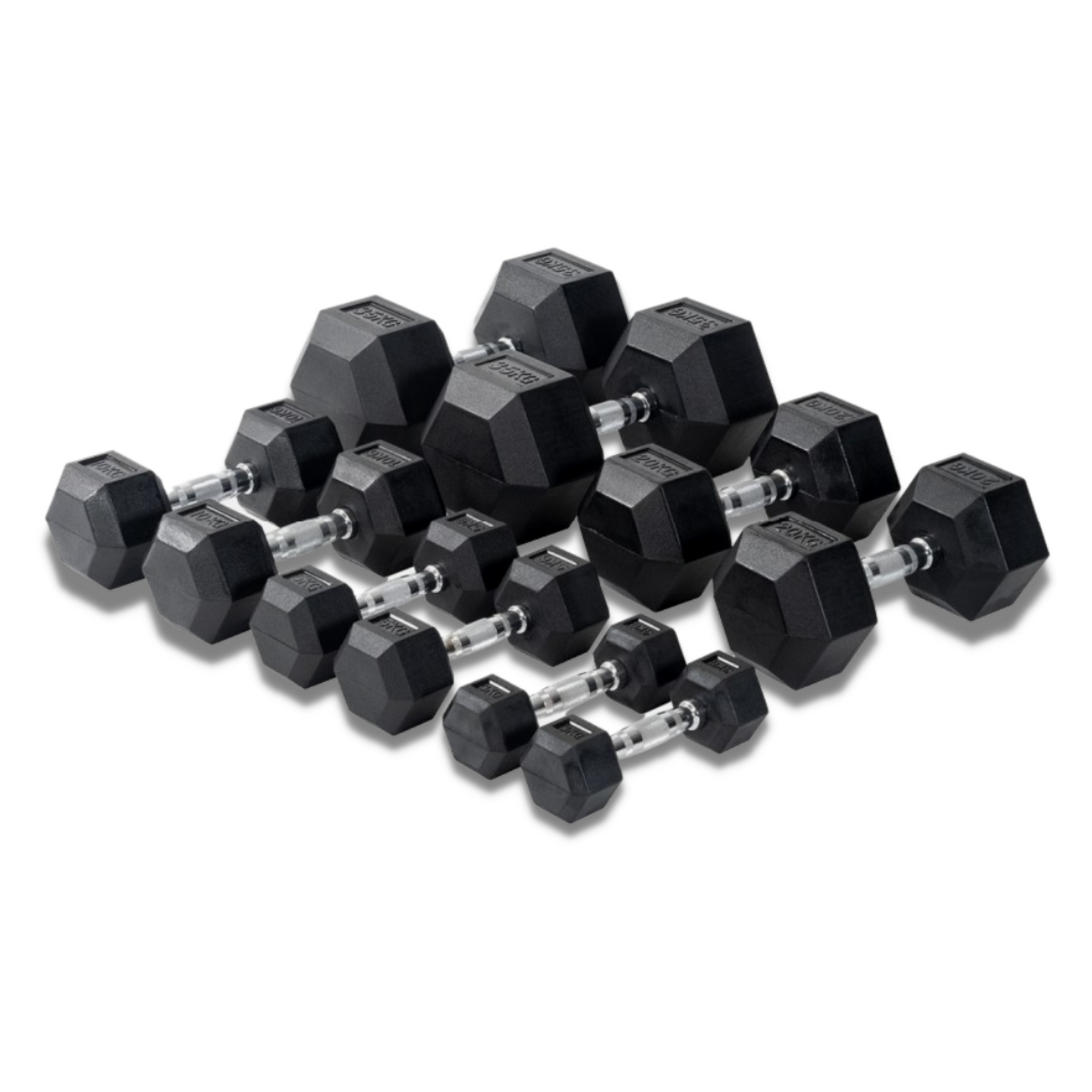What is functional training, and what are the different types of functional training equipment available?
Functional training is a type of workout that involves movements that mimic daily activities or sports-specific movements to improve strength, flexibility, balance, and coordination. The goal of functional training is to condition & improve overall strength, fitness, prevent injuries, and improve performance in activities of daily living or sports.
There are several types of functional, strength training & conditioning equipment available, including:
-
Kettlebells: These are cannonball-shaped weights with a handle attached to the top. They can be used for various exercises like swings, snatches, and cleans.
-
Medicine Balls: These are weighted balls available in different sizes and weights that can be used for various exercises like throws, slams, and rotations.
-
Resistance Bands: These are stretchable bands that can be used for resistance exercises like pull-aparts, curls, and squats.
-
Suspension Trainers: These are straps with handles that can be attached to a stable surface and used for bodyweight exercises like push-ups, rows, and squats.
-
Agility Ladders: These are flat ladders with rungs that can be used for agility and footwork exercises.
-
Plyometric Boxes: These are boxes of different heights that can be used for explosive jumping exercises like box jumps and step-ups.
-
Battle Ropes: These are thick ropes that can be used for various exercises like waves, slams, and pulls.
By using functional training equipment, you can condition your body while improving your strength, flexibility, and coordination while also making your workouts more fun and engaging. When choosing conditioning equipment, consider your fitness goals, experience level, and any specific health concerns or limitations.
How does functional training differ from traditional weightlifting and cardio exercises, and what are the benefits?
Functional training differs from traditional weightlifting and cardio exercises by focusing on movements that mimic daily activities or sports-specific movements, rather than isolated muscle groups. It involves using multiple muscle groups and joints simultaneously to improve overall strength, flexibility, balance, coordination, and endurance.
Traditional weightlifting exercises typically involve using machines or free weights to target specific muscle groups, while cardio exercises focus on aerobic conditioning to improve cardiovascular health. While these exercises are effective for improving strength and endurance, they may not translate well to real-life activities and movements that condition the body.
Functional training & conditioning, on the other hand, aims to improve overall functional fitness, which is the ability to perform daily activities and sports-specific movements efficiently and safely. It often involves using bodyweight exercises, resistance bands, stability balls, medicine balls, kettlebells, and other equipment to perform exercises that require coordination, balance, and strength.
The benefits of functional training include improved body conditioning, overall fitness, increased muscle endurance, reduced risk of injury, improved coordination and balance, and improved athletic performance. It can also be a more engaging and varied form of exercise, as it incorporates a wide range of movements and equipment.
What are the advantages of using functional training equipment, and how does it help improve overall physical fitness and athletic performance?
Functional training equipment is designed to help individuals develop and maintain functional movement patterns that are used in daily activities and sports. By using functional training equipment, individuals can improve their overall physical fitness and athletic performance in various ways. Here are some advantages of using functional training equipment:
-
Increases core strength: Functional training exercises require a lot of core stability, which helps to build strength in the core muscles. A strong core helps to improve posture, balance, and overall strength.
-
Enhances overall stability and balance: Functional training exercises work the smaller stabilizer muscles that support larger muscle groups. This improves overall stability and balance, reducing the risk of injury and falls.
-
Improves flexibility and range of motion: Functional training exercises often involve multi-joint movements that help to improve flexibility and range of motion.
-
Builds muscular endurance: Functional training exercises often involve high repetitions and low weights, which help to build muscular endurance.
-
Increases agility and speed: Many functional training exercises involve quick movements and changes in direction, which helps to improve agility and speed.
-
Helps to prevent injury: By working on functional movements, individuals can improve their ability to perform activities of daily living and sports-specific movements, reducing the risk of injury.
Overall, functional training equipment can help individuals improve their physical fitness and athletic performance in various ways. By incorporating functional training into their workouts, individuals can develop a stronger, more stable, and more functional body.
Can beginners use functional training & conditioning equipment?
Yes, beginners can use functional training & conditioning equipment. Functional training can be modified to suit the needs and fitness levels of individuals at all stages of their fitness journey. It is important to start with basic exercises and gradually increase the intensity and complexity of the workout over time. It is also recommended to seek guidance from a certified trainer to ensure proper form and technique when using functional training equipment.
What is the cost of functional training equipment, and how to budget for it?
The cost of functional training equipment varies depending on the type, brand, and quality of the equipment. Some equipment, like resistance bands and jump ropes, can be relatively inexpensive, while others like sleds and battle ropes can be more expensive.
When budgeting for functional training equipment, it's important to consider your fitness goals and how often you plan to use the equipment. Investing in high-quality equipment that will last longer can be more cost-effective in the long run. It's also a good idea to look for sales or discounts, or consider buying used equipment.
Many gyms and fitness studios offer functional training equipment as part of their facilities, which can be a more affordable option for those who don't want to invest in their own equipment. Additionally, many exercises can be done using bodyweight or minimal equipment, making functional training accessible for those on a tight budget.


